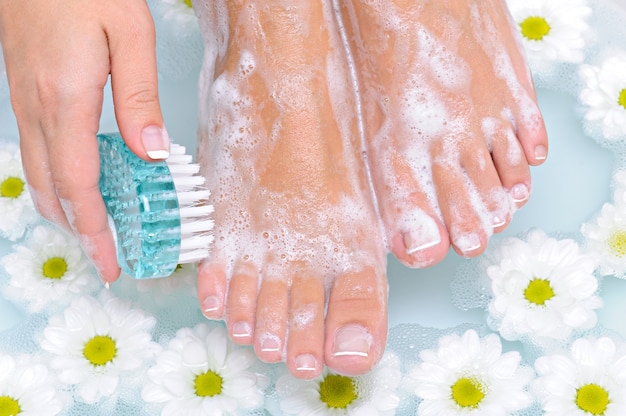Tips for a Healthy Feet for Diabetic Patients
Diabetes is one of the most common chronic diseases in the world today. It is estimated that more than 38 million people in the United States have diabetes. Unfortunately, of these people, 9% are undiagnosed, and over half of those diagnosed will experience complications within their lifetime. The good news is that many people with diabetes can control their blood sugar levels and prevent or manage complications through regular monitoring and treatment.
Diabetic patients have to take special care of their foot hygiene. This is because they are more susceptible to the risks of foot problems, such as infections and ulcers and the recovering takes a lot of time due to poor blood circulation.
How does your diabetes affect your foot health?
Diabetes is a disease that affects the body's ability to produce, control, and use insulin. It's usually caused by high blood glucose levels (sugar), but other factors like obesity, high cholesterol, and excess alcohol intake can also cause it. The causes of diabetes are many and varied, but they all have one thing in common: they cause your body to produce too much insulin. This causes your blood glucose levels to rise too high for too long, which can damage blood vessels throughout the body.
Why is diabetic footcare necessary?
Your feet are an extension of your overall health. When you have diabetes, your blood sugar levels can be unstable, so you must take care of your feet to help prevent any injuries from occurring.
Diabetes can affect your feet because it impairs blood flow in the extremities, leading to poor circulation and damage to nerves, muscles, tendons and bones. This can result in poor healing of wounds and skin infections. In addition, high blood sugar levels can cause nerve damage that causes pain or numbness in the feet. Problems with circulation also cause your feet to become too warm or cold, leading to frostbite or amputation of toes or even fingers.
Footcare tips for diabetic patients:
Wear shoes that fit well:

Wear shoes that support your arch and provide proper cushioning for your foot. Shoes that don't fit properly will cause blisters and calluses. Make sure your shoes fit well and aren't too tight or loose. If they're too loose, they won't support the bones in the foot properly, which can lead to problems such as bunions (bony protrusions on the toes), hammertoes (corns on the heels) and plantar fasciitis (a repetitive strain injury). If they're too tight, they'll pull on your foot's arch and cause numbness, tingling, and pain when you walk.
Check your feet daily:
This is the first thing you should do when you get up in the morning. You should check your feet for any signs of infection, like redness or swelling, cuts, wounds, or blisters. If you see any changes in your feet, contact your doctor immediately. Even after returning from work, you should always check minutely if there are any minor cuts and wounds. Use a small mirror and check the bottom of your feet.
Wash your feet every night:

After a long day of wearing shoes and walking all over town, you must take good care of your feet. That means washing them with soap and water every night before bedtime. It would help if you also soaked them in warm water until they're nice and soft, so they'll be easier on the skin when you put on socks tomorrow morning. After washing, you can massage your feet with Dr Foot's Diabetic Neurotherapy Foot Cream. It's non-greasy, non-toxic and contains light fragrances. In addition, this foot cream contains the goodness of glycerin, tea tree oil, and soybean oil, nourishes your feet and improves blood circulation.
Avoid walking barefoot outside:
The ground is dirty from all the traffic around it, so walking barefoot outside can cause irritation on your skin when it comes into contact with dirt or debris from outside sources like cars or garbage cans. In addition, walking barefoot causes infection or infection-related complications like gangrene or cellulitis (a painful bacterial infection). Instead of going barefoot outside, wear socks with socks inside them if it's cold out there.
Trim toenails frequently:
Trim your toenails regularly with a clipper or scissors to avoid ingrown nails, which can cause pain and discomfort for both you and your loved ones. Gently smooth and sharpen the edges of your nails. Pay attention to the sides and ensure you don't cut your skin.
Don't remove corns and calluses by yourself:
If you have diabetes, avoid treating any infection by yourself. If there is a foot corn or calluses, seek professional help.
Get your feet checked frequently:
Diabetic foot care involves frequent doctor appointments. An annual routine check-up for your feet is necessary to monitor the blood flow.
Exercise:
You can do some exercises in your spare time to regulate the blood flow. Just put your feet up and wiggle your toes for a while. You can also choose outdoor activities like walking, swimming, or cycling.









